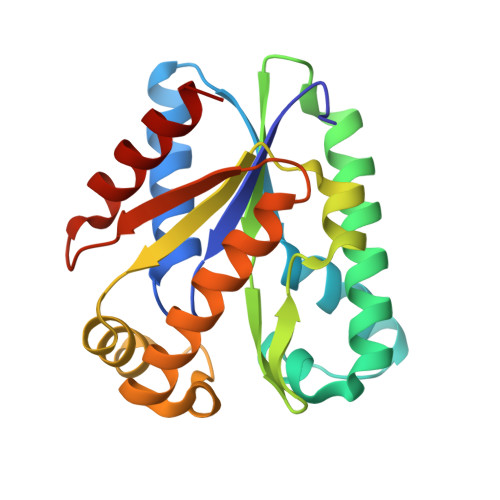Crystal structure of adenylate kinase from an extremophilic archaeon Aeropyrum pernix with ATP and AMP.
Shibanuma, Y., Nemoto, N., Yamamoto, N., Sampei, G.I., Kawai, G.(2020) J Biochem 168: 223-229
- PubMed: 32271910
- DOI: https://doi.org/10.1093/jb/mvaa043
- Primary Citation of Related Structures:
6LN3 - PubMed Abstract:
The crystal structure of an adenylate kinase from an extremophilic archaeon Aeropyrum pernix was determined in complex with full ligands, ATP-Mg2+ and AMP, at a resolution of 2.0 Å. The protein forms a trimer as found for other adenylate kinases from archaea. Interestingly, the reacting three atoms, two phosphorus and one oxygen atoms, were located almost in line, supporting the SN2 nucleophilic substitution reaction mechanism. Based on the crystal structure obtained, the reaction coordinate was estimated by the quantum mechanics calculations combined with molecular dynamics. It was found that the reaction undergoes two energy barriers; the steps for breaking the bond between the oxygen and γ-phosphorus atoms of ATP to produce a phosphoryl fragment and creating the bond between the phosphoryl fragment and the oxygen atom of the β-phosphate group of ADP. The reaction coordinate analysis also suggested the role of amino-acid residues for the catalysis of adenylate kinase.
Organizational Affiliation:
Graduate School of Engineering, Chiba Institute of Technology, 2-17-1 Tsudanuma, Narashino-shi, Chiba 275-0016, Japan.



















